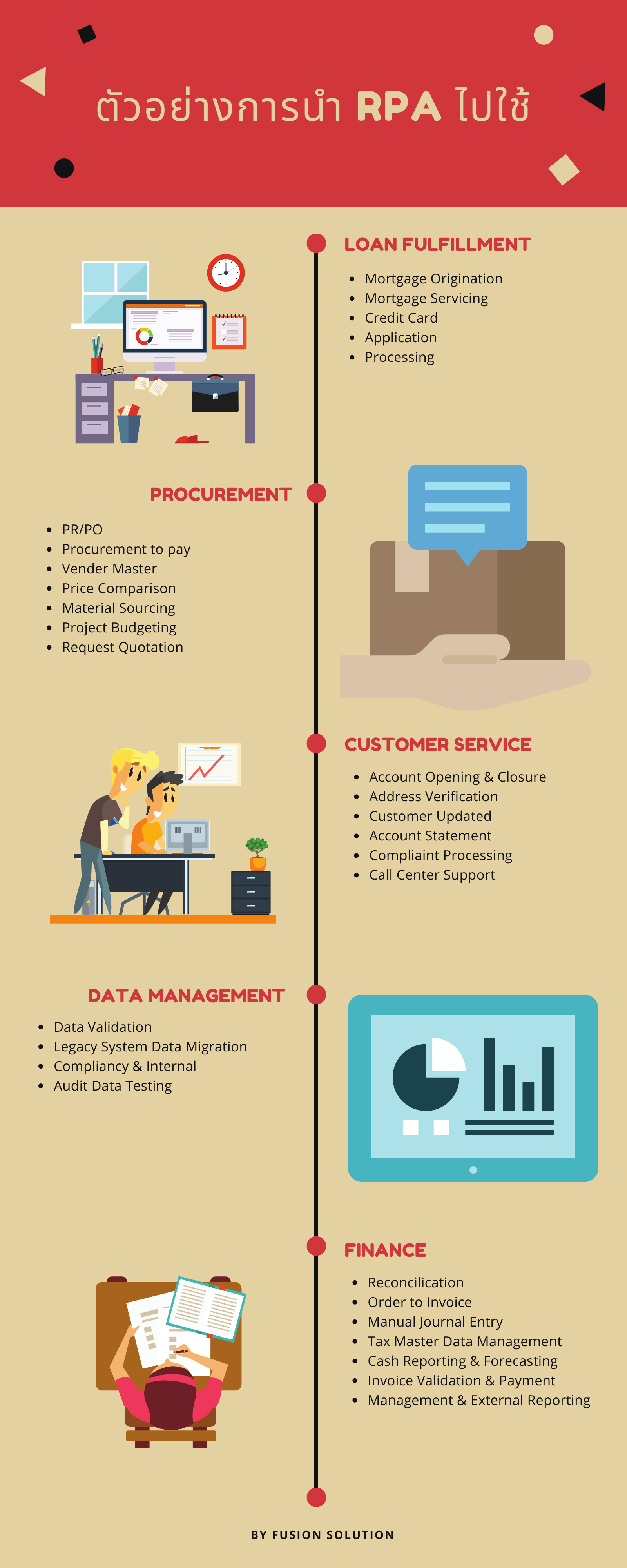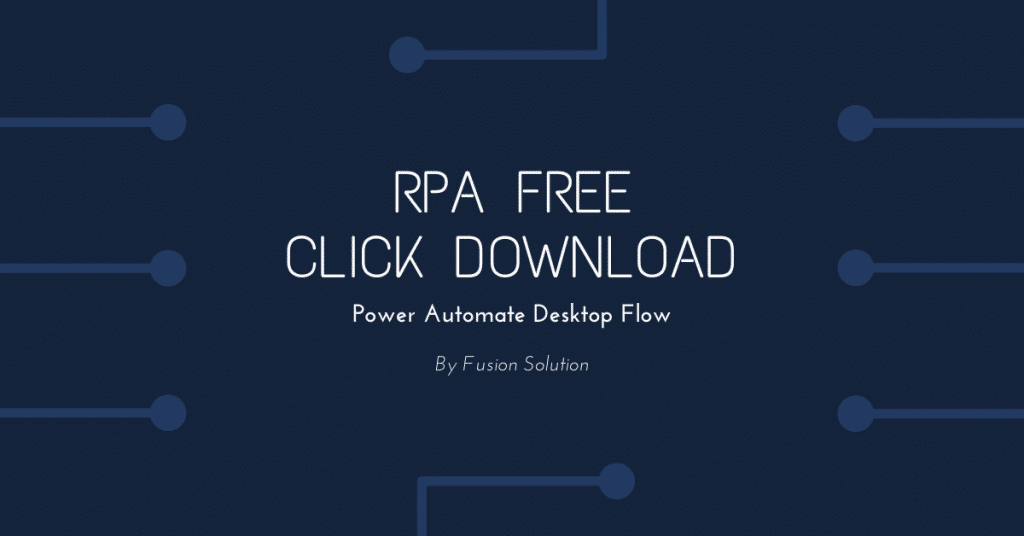Robotic Process Automation
Fusion Solution : Robotic Process Automation ( RPA )
Fusion Solution provides consulting, installation, and development services for Robotic Process Automation. The company is an official distributor of Microsoft Automate Desktop, a tool for creating Robotic Process Automation easily and for free (can be downloaded from Microsoft).
Robotic Process Automation ( RPA ) is
Robotic Process Automation (RPA) is a form of business process automation that allows anyone to define a set of instructions for a robot, or “bot,” to carry out. RPA bots can mimic most human-computer interactions to perform error-free tasks at high volume and speed. RPA bots can free up employees from spending time on repetitive tasks, so they can focus on high-value, mission-critical tasks instead.
Working pattern of ( RPA )
- login into any application
- Connect to system api
- Copy and paste data
- Move file and folder
- Extract and process structured and semi-structured content from documents, PDFs, email and forms
- Read and write to databases
- Open emails and attachments
- Scrape data from the web
- Make calculations
Examples of RPA use cases
Event: You want to capture a screen shot of a transaction name entered into the system and found that the system cannot function. This is a system test. In this case, it requires a lot of people and time. In this case, we can use RPA to manage it instead of people.
Optimize work processes and improve compliance
RPA eliminates the risk of errors from business operations and increases compliance with regulations and policies. Instead of relying on employees to constantly and accurately re-enter data or perform manual tasks necessary to comply with regulations or policies, RPA processes these memorization tasks in seconds without human intervention.
Compare RPA with other approaches
The primary function of RPA is to migrate data from one system to another. For example, if Excel is used to record data and then needs to be entered into SAP, traditional methods require writing code for the connection, and both systems must be outsourced: the data-sending system and the data-receiving system. This creates significant interoperability issues. However, with RPA, there's no need to outsource either, as RPA doesn't interfere with any of the coding. This makes RPA migration faster and easier than other methods.

Raising personnel costs
Time spent on low-value tasks like routing forms, data entry, and other rote activities can be used to free up people to focus on more valuable functions like oversight, exception management, and process improvement. RPA, as part of an overall process management and automation solution, helps businesses become more productive, agile, and responsive to market and customer needs.
Applications in various businesses
Due to its quantifiable and rapid ROI on cost, RPA has captured the attention of a wide range of industries, from financial services to healthcare, IT, manufacturing, retail, telecommunications, transportation, utilities, and more, all driven by similar needs and goals, including increased efficiency, reduced costs, fewer errors, and regulatory compliance.

RPA Implementation Guidelines
Implementing RPA starts with the goal of creating a robot to assist with the work. What type of work will it be? How many robots will it need to be separated into? Will it need to work continuously? To begin, you should start with small goals, such as moving data from Excel to key in an app page, something like that.
If the problem is only this, creating a robot requires using the tools that RPA provides. The result of creating will be a file that is a robot.
The call will be manual, meaning we have to click to call it directly.
This is a simple way of doing RPA, but we can also create more complex systems, such as having robots work automatically or having multiple robots work together continuously.
However, there are still some cases where RPA is not suitable for use, namely, conditions that are complex or have multiple possible approaches, which are not suitable for RPA.
Questions about RPA
- Can RPA be used to read Excel data?
- You can read it.
- How can RPA help with complex tasks?
- This can be done if there is a Work Flow tool to help coordinate and learn how to use RPA.
- Is the license purchase format a one-time purchase?
- It is a purchase with annual rental.
- Is there a free license?
- Yes, these licenses can be loaded and tested.
- Can RPA be used to read Excel data?
OCR is another important feature of automation.
RPA can only work if the data is in digital form. If the data is on paper, RPA cannot work. Therefore, starting an automation system may require a data conversion process using OCR technology.
For OCR, we recommend Power Automate AI, which can perform OCR easily, at a low price, but with over 100% efficiency. Let's take a look at an example of OCR in the following clip.
More Information
Insurance Case Study

